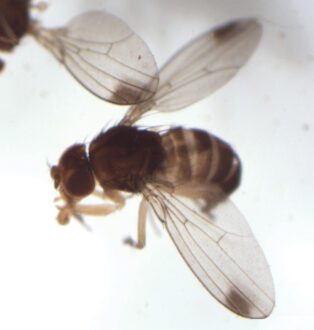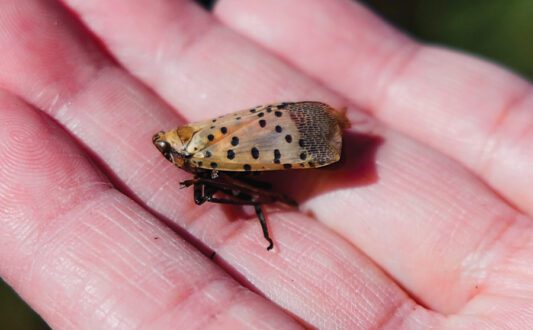Mar 18, 2024Pest update: Efforts continue to control SWD, SLF
In 2022, Fruit Growers News highlighted research in California and other states related to imported wasps to control the spotted-wing drosophila (SWD) fruit fly. Kent Daane, Extension specialist with UC-Berkeley and stationed at the Kearney Agricultural Research and Education Center for the University of California, provides insight on the latest in this ongoing research.
“There is a multistate and multiagency effort to improve the biological control of the spotted-wing drosophila — Drosophila suzukii. After years of work, a small wasp from Asia, Ganaspis, was allowed to be released in the U.S. This parasitoid attacks fly maggots in the fruit and develops on the maggots later emerging as an adult from the fly pupa,” Daane said. “Along with this wasp, a second Asian parasitoid, Leptopilina japonica, was found first in British Columbia, Canada and has since spread to many regions in the U.S.’’


Bugwood.org.
The SWD team, which is funded through USDA and local state or commodity grants, has been rearing and releasing these two types of wasp species to improve SWD control.
“Biocontrols will especially target the riparian zones that provide a refuge for the fly. In some regions, such as Delaware, up to 70% parasitism has been recorded in non-crop refuges.”
Yet with this success, the need for other tools has not changed and the SWD team is working on many different control tools.
“Insecticides will probably still be needed in the commercial crops. SWD parasitism levels in California, in particular, still remain low and it is suspected that the hot-dry summers may not be conducive to the wasps’ establishment. Work will continue with these and other beneficial insects,” Daane said.
On the East Coast, the spotted lanternfly is found in large numbers, but has been easy to kill with insecticides, Daane said. This pest has not yet established on the West Coast, but is likely the next invasive species the region will encounter. Additionally, he noted that the West Coast and state agencies are “actively monitoring” for any presence of spotted lanternfly in key places in California and other locations.
Daane said monitoring vineyards is important to reduce the risk of insect infestations in the vineyards.
“Vineyard managers and PCAs (pest control advisors) monitor their blocks for common insect pests — mealybugs, leafhoppers, mites, etc. In California, they can make use of websites such as CDFA’s (California Department of Food and Agriculture) invasive species site, cdfa.ca.gov/plant/pdep/target_pests.html, where they can download information on invasive species to share with field crews,” he said.
If unidentified pests are uncovered, contact the local farm advisor or county ag commissioner to assist in identifying the insect.


“The best advice is to simply be aware of new pests and get them identified early so control actions can be implemented,” Daane said. “For decades, growers, PCAs and researchers have been trying to increase beneficial insects and decrease pests through manipulating vineyard or orchard nutrition, understory composition with cover crops, improved natural enemy habitat and releasing insectary-reared natural enemies.
“It may seem obvious, but the selection and use of pesticides that don’t kill natural enemies is probably the best way to encourage their presence in the crop system.”
Daane also noted that for most crop systems, there is always a level of biological control, but the level of control needed is not always met by natural enemies alone for specific pests.
“Think of it this way … there are dozens of insect species that are vineyard pests, but growers are usually spraying for only two to three species such as the vine mealybug. So natural enemies are working to help keep many of those minor pest species in check,” he said.














